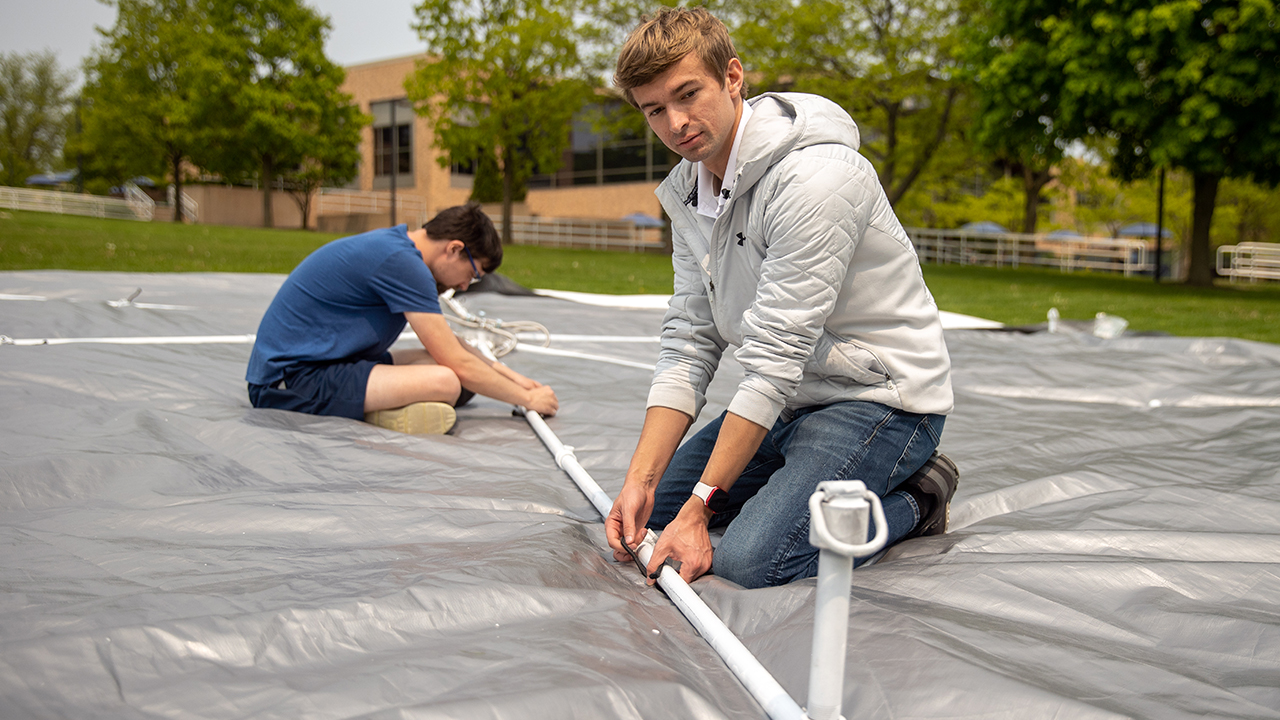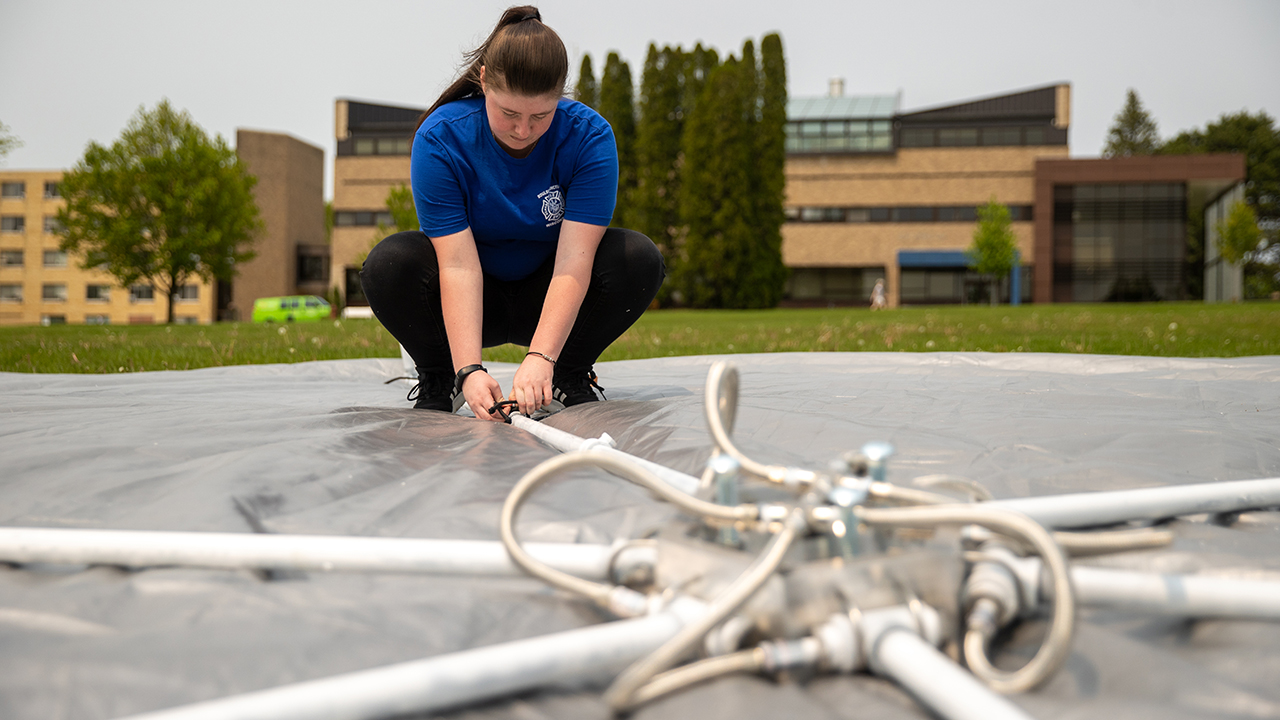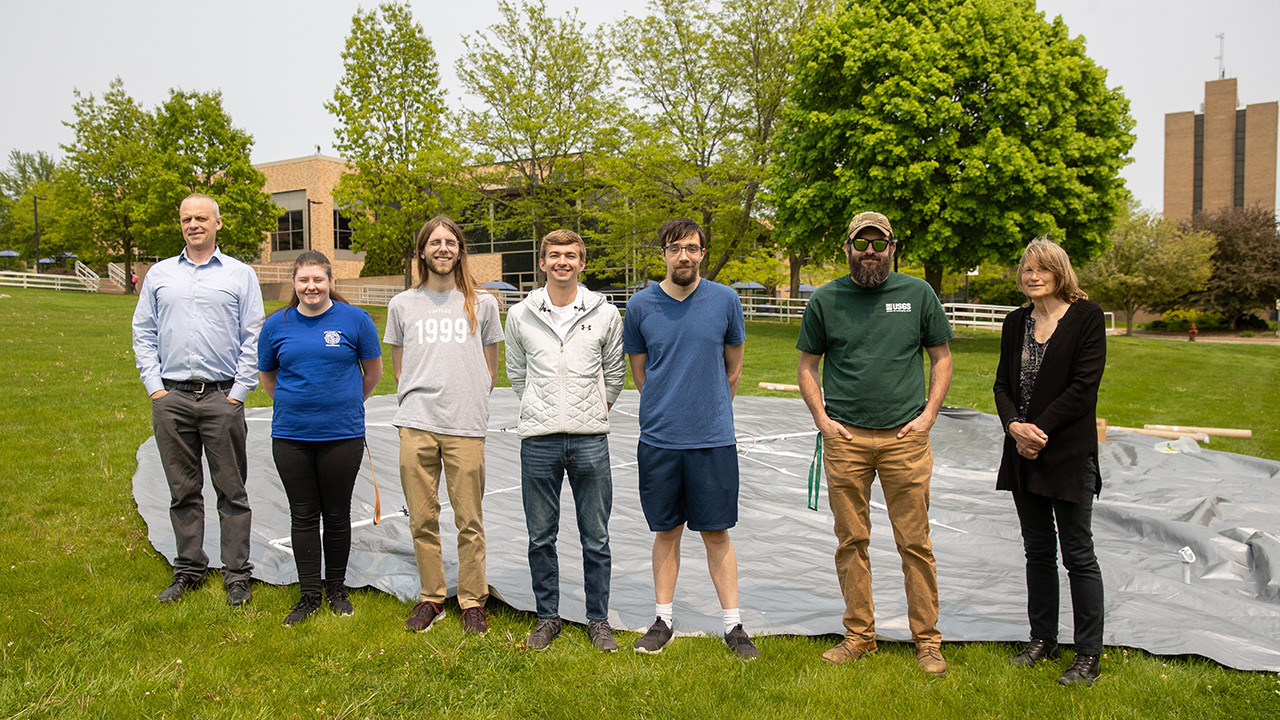


University of Wisconsin-Platteville students are helping biologists from the U.S. Geological Survey combat a growing problem in the Great Lakes region – the invasive zebra and quagga mussel, which has caused significant ecological and economic damage in the region since it was first discovered there more than three decades ago. As a Senior Design capstone project, four recently graduated mechanical engineering students – Logan Budack, Kade Muehlenhaupt, AJ Pomplun and Dorothy Schildt – were tasked with designing and building a submersible, umbrella-like device that can infuse carbon dioxide to kill the zebra and quagga mussels.
The students were given several restraints, including a size and weight not to exceed an approximate 32.8-foot diameter and 200 pounds, and the requirement that it be portable, easy to clean between uses and maintain a carbon dioxide concentration for seven days. The group began by evaluating an initial design created by another group of students the previous semester and identified some areas for improvement, noting that the original design’s extra pieces caused it to be more mechanically complicated than necessary and also added extra weight.
After further evaluation and research, the team modified the initial umbrella design so that rather than opening at the sides like a traditional umbrella, the new design draws the arms down from a central post. To accommodate their new design, the team created a central manifold. Made of steel, the manifold allows the device a 180-degree rotation in the water, is easy to clean and has tubes that allow for carbon dioxide distribution. The students spent up to 40 hours machining the prototype in the Huff Family Innovation Center.
The students demonstrated the prototype for USGS biologists Dr. Diane Waller and Matthew Barbour, who then transported it to their La Crosse, Wisconsin, science center for testing.
This latest project is one of 10 similar collaborative projects with the USGS over the past seven years, all aimed at preventing the spread of aquatic invasive species. The projects are led by Dr. Thomas Zolper, associate professor of mechanical engineering.
“Our collaborations with USGS biologists have been very interesting and engaging,” said Zolper. “They propose novel methods to treat the proliferation of invasive fish, mollusks and microbes in U.S. waterways. Over 80 UW-Platteville engineering students have had the opportunity to design innovative fluid machinery to enact the USGS treatment proposals. The students and I find it very rewarding to apply engineering principles to help address national environmental challenges.”